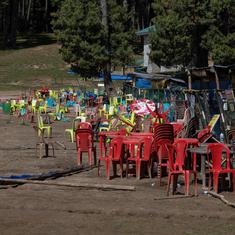As senior Congress leaders at a meeting on Monday discussed who should lead the party, it is time for India’s largest opposition outfit puts its house in order. The ailing Sonia Gandhi cannot continue as president for long. Reluctant Rahul Gandhi and his sister Priyanka Gandhi Vadra, tainted by the allegations levelled against her husband Robert Vadra, cannot be natural choices for the position five members of their family have held over 101 years.
By the evening, the Congress Working Committee meeting ended with participants asking Sonia Gandhi to remain interim party president. However, in order to revamp the organisation, the Congress must not nominate anyone to the position. Instead, it should look back at its recent history under PV Narasimha Rao and hold an internal election to choose their leader.
It is true that former Prime Minister of India and Congress president Rao was tainted in many ways while running a minority government at the Centre between 1991 and 1996. The relationship between Sonia Gandhi and Narasimha Rao became so sour that after his death in 2004, the former prime minister’s body was not allowed to lie in state in the Congress headquarters. His last rites had to be performed not in New Delhi but in his home state of Andhra Pradesh.
Still, at the end of last month, Sonia and Rahul Gandhi paid tribute to Rao on his birth centenary, writing a letter to Telangana Pradesh Congress Committee praising his bold leadership.
The Congress party must re-examine Rao’s tenure and see how someone from outside the Gandhi clan, for the first time in two decades, ran both the government and the party between 1991 and 1996.
A churning
Inside the party, Rao tried to nudge the party out of the shadow of the Nehru-Gandhi family. It created churning inside the Congress. In 1992, as Congress president, he decided to hold organisational elections for the first time since 1973. In the intervening years, the Congress leadership had been dominated by Indira Gandhi and her sons Sanjay and Rahul.
Influential leaders such as Arjun Singh, Sharad Pawar and Rajesh Pilot threw their hats into the ring. The session of the All Indian Congress Committee in Tirupati that year debated political and organisational resolutions openly on the party forum.
As Sanjaya Baru noted in his book 1991: How PV Narasimha Rao Made History, “The Tirupati session strengthened PV and the party organisation and, in doing so, became an important step in the direction of once again making the INC [Indian National Congress] a truly national political party that was not identified with any one individual or family.”
Despite Rao’s decision to hold elections, he could not digest the fact that his critics were elected to the Congress Working Committee. He had nullified the election on the pretext that no Scheduled Caste/Scheduled Tribe and women candidates had been elected. But he allowed the internal power struggle to continue. Rao reconstituted the committee, making sure to nominate all the members who had been elected.

Rao showed that it was possible to survive the pressure of heavyweight rivals including Arjun Singh, Narayan Datt Tiwari, Sharad Pawar, AK Antony and those who were close to Gandhi family. He had the backing of the Southern lobby of the party. Without the support of the Gandhis, he completed a full term in office as prime minister in 1996, running a minority government with a faction-ridden Congress.
Internal elections are important because they pose a challenge to the status quo and help a party to shake off its inertia. It also allows new faces to emerge. For example, in the1992 Congress organisational elections, a young woman named Mamata Banerjee contested for the post of West Bengal Pradesh Congress president and lost to the state party president Somen Mitra.
Still, her challenge raised the pitch of the debate on how the Congress party should have fought the Left in the state. It also helped her flourish as a mass leader. She rose so dramatically that Somen Mitra in 2014 joined the Trinamool Congress party that Banerjee started in 1998.
In 1997, at a session of the All India Congress Committee session in Kolkata, Sitaram Kesri also contested the Congress presidential elections and won against Rajesh Pilot and Sharad Pawar. Even in 2000, Rajesh Pilot, claiming to represent the “common Congressmen” threw his hat in the organisational election against Sonia Gandhi. He lost. But organisational polls always give greater legitimacy to a person who is elected rather than a candidate who is nominated.
Sonia Gandhi later led Congress to two successive electoral victories in 2004 and 2009. But in 1999, leaders like Sharad Pawar, PA Sangma and Tariq Anwar broke away to form the Nationalist Congress Party in 1999. They were not ready to accept the leadership of a person who had not been born in India.
As Congress general secretary, Rahul Gandhi in 2008 started organisational polls for the Yuva Congress but could not sustain the momentum. In the parent body too, elections for positions of office bearers were held from the block level to the national level. But there were hardly any direct elections. Even Rahul Gandhi was elected unopposed.
Three decades after Rao’s leadership, the Congress must submit itself to the same churning that he had attempted . It cannot rely anymore on the Gandhis to fight Narendra Modi, or the political narrative of Sangh Parivar. How long will young and able leaders play the second-fiddle to the old guard or the Gandhis? For the sake of Indian democracy, internal democracy in the Congress is vital.
Sambit Pal is a freelance journalist and media educator.










